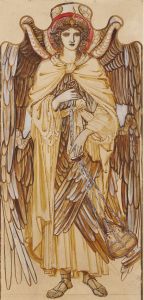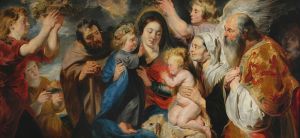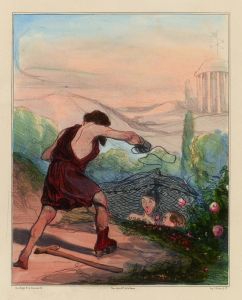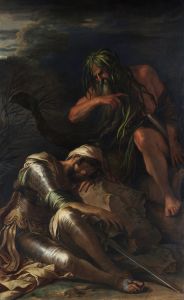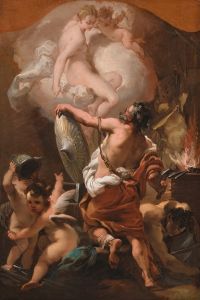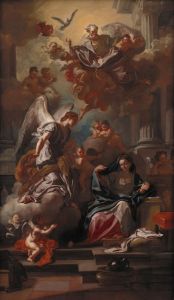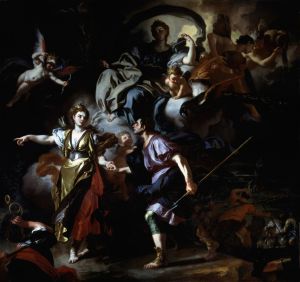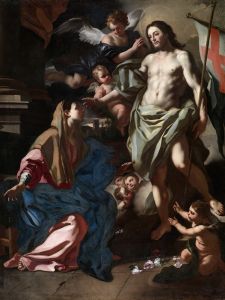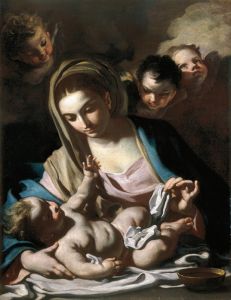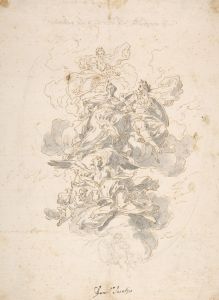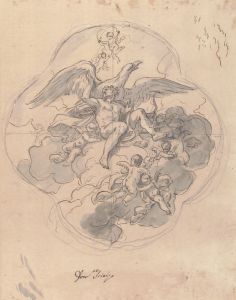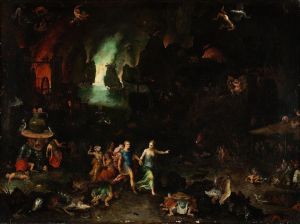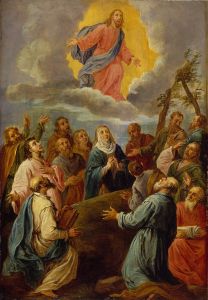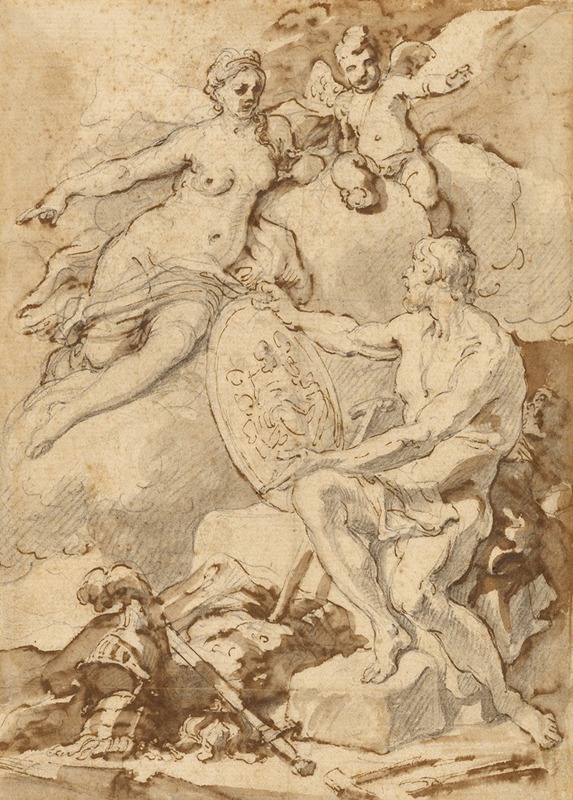
Venus Receiving from Vulcan the Arms of Aeneas
A hand-painted replica of Francesco Solimena’s masterpiece Venus Receiving from Vulcan the Arms of Aeneas, meticulously crafted by professional artists to capture the true essence of the original. Each piece is created with museum-quality canvas and rare mineral pigments, carefully painted by experienced artists with delicate brushstrokes and rich, layered colors to perfectly recreate the texture of the original artwork. Unlike machine-printed reproductions, this hand-painted version brings the painting to life, infused with the artist’s emotions and skill in every stroke. Whether for personal collection or home decoration, it instantly elevates the artistic atmosphere of any space.
Francesco Solimena's painting Venus Receiving from Vulcan the Arms of Aeneas is a Baroque artwork that depicts a scene from Roman mythology, specifically from Virgil's epic poem, the Aeneid. The painting illustrates the moment when Venus, the goddess of love, receives a set of divinely crafted armor and weapons for her son, Aeneas, from Vulcan, the god of fire and metalworking. This episode is significant in the Aeneid as it symbolizes divine intervention and support for Aeneas, who is destined to found the Roman people.
Francesco Solimena (1657–1747) was an Italian painter and one of the leading figures of the late Baroque period. Known for his dramatic compositions, dynamic use of light and shadow, and rich color palette, Solimena was highly influential in the artistic circles of Naples and beyond. His works often featured religious, mythological, and historical themes, reflecting the grandeur and theatricality characteristic of Baroque art.
In this painting, Solimena captures the dramatic interaction between Venus and Vulcan. Venus, often depicted as a figure of beauty and grace, is shown receiving the armor with a sense of urgency and purpose, emphasizing her role as a protective mother. Vulcan, traditionally portrayed as a robust and industrious figure, is shown presenting the armor, which he forged in his workshop. The scene is imbued with a sense of divine craftsmanship and celestial importance, as the armor is meant to aid Aeneas in his heroic endeavors.
The composition of the painting is typical of Solimena's style, with a strong focus on movement, emotion, and the interplay of light and shadow. The figures are arranged in a dynamic manner, drawing the viewer's eye across the canvas and highlighting the central action. The use of rich, warm colors and dramatic lighting enhances the sense of drama and emphasizes the divine nature of the scene.
The exact date of the painting's creation is not definitively documented, but it is believed to have been produced during Solimena's mature period, when he was at the height of his artistic powers. The work reflects the influence of earlier Baroque masters, such as Peter Paul Rubens and Luca Giordano, while also showcasing Solimena's unique approach to composition and storytelling.
Today, Venus Receiving from Vulcan the Arms of Aeneas is recognized as an exemplary work of Baroque art, demonstrating Solimena's skill in combining mythological themes with the dramatic visual language of the period. The painting is held in a private or institutional collection, though specific details about its current location and provenance are not widely documented.





